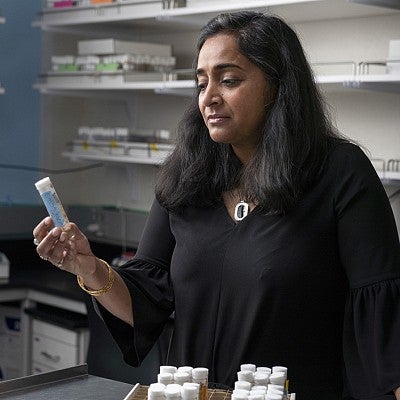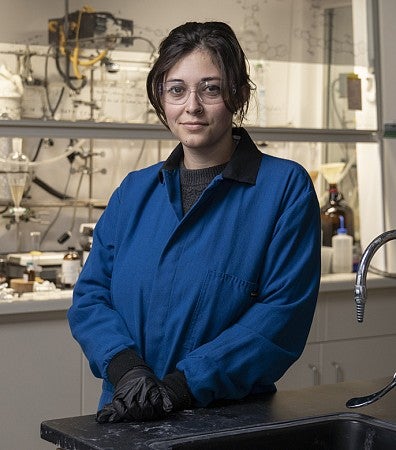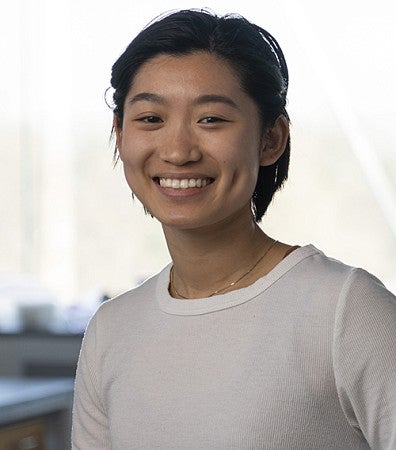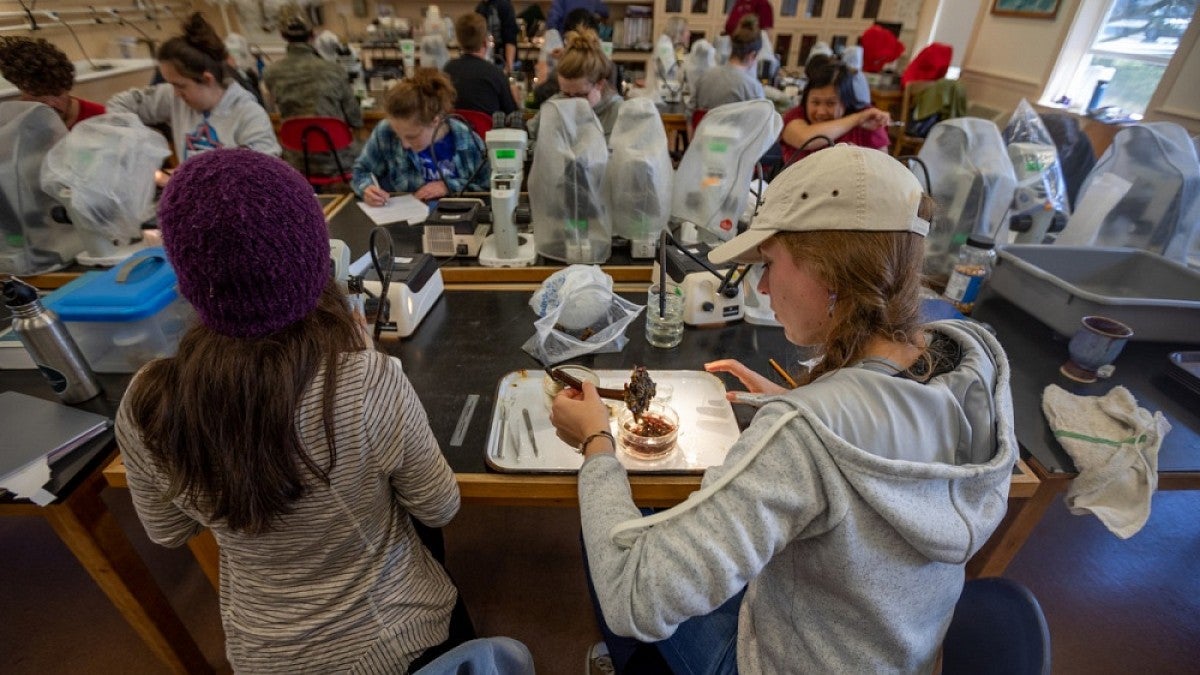The stereotypical picture of a scientist — a white man in a lab coat — just isn’t true.
That’s a big part of why Feb. 11 has been designated the International Day of Women and Girls in Science by the United Nations. It’s an effort to push for greater progress internationally in areas of science, technology, engineering and math, the so-called STEM subjects.
But despite enormous strides, women are still underrepresented in most STEM fields, particularly the physical sciences and engineering. For example, a 2021 Pew Research Center report found that women make up about 50 percent of life scientists in the U.S. but just 40 percent of physical scientists and 25 percent of engineers.
And women who do make it into those fields still earn less than their male counterparts. The median salary for women in STEM is about 75 percent of men. Black and Hispanic women earn just 63 percent of what their white male counterparts do.
Here at home, many women on the UO campus are doing innovative research while also working to make the sciences better for everyone. Meet a few of them below.
Nadia Singh

“One of the things that's interesting about meiosis is that there’s a major division between studying the mechanics and evolutionary consequences,” Singh said. “I’m trying to bridge those two fields.”
Singh sees her role as a professor as more than just teaching students how to do science.
Big vinyl stickers plastering the walls of her lab highlight the values the lab has mutually agreed on, words like transparency, inclusion and respect.
“We think a lot about diversity, equity and inclusion, and we read papers on equity and inclusion,” she said. “There’s a huge amount of research out there on (topics like) inequities in grant funding.”
Singh also teaches in the Students of Color Opportunities for Research Enrichment program, or SCORE. SCORE was started as a club by student Alex De Verteuil in 2015 to get more students of color involved in research. It’s now grown into a full-year class that covers the nuts and bolts of research: how to read a paper, how to work in a lab, and how to analyze and present data.
And beyond the UO, Singh pushes for more equity in her field. For instance, her efforts have helped make sessions on diversity, equity and inclusion key parts of major scientific meetings.
Bringing one’s identity into the lab instead of checking it at the door can lead to better research and make science more inclusive, she said.
“One of the things that I think is really important is humanizing the scientific process,” Singh said. “I have two daughters, and they're part of my identity.”
Bella Demachkie

As a new graduate student, Demachkie noticed that women and people of color were more likely than others to leave graduate school before getting their degree. That motivated her to get involved, because even small changes to the status quo can make a big difference in how welcome people feel in an environment.
“I think of it less as outreach and more about trying to support the population we currently have here,” she said.
For instance, Demachkie is an active member of Women in Graduate Science, a UO group that supports female graduate students on campus. Through that group, she and her peers plan social events and meet-ups.
“We've been doing a lot of community-building events, primarily for women, but really for anyone of any gender identity who supports gender equality in the sciences,” Demachkie said.
She’s also working to improve conditions in the chemistry department, as member of its Division of Equity and Inclusion committee. For instance, she and others in the group are pushing for access to gender-neutral bathrooms in the building.
“I don't know of any other position I could be in where I'd have the opportunities I'd have here,” Demachkie said. “I get to be part of effecting change, and I also get to do research in a field that I am passionate and curious about.”
Karly Fear

Now, working in the lab of Parisa Hosseinzadeh, she’s designing new proteins that could someday be part of a drug delivery system to help bone fractures heal faster.
“It’s a mixture of computational and experimental work, which I really love,” Fear said.
Having found success and fulfillment in research, Fear is now working to pave the way for those coming after her.
“I knew there were a lot of barriers for underrepresented groups,” she said, “and I’ve been able to be part of things that have made it more accessible for people like me.”
For instance, she’s been a peer mentor for Affiliated Students for Undergraduate Research and Engagement, a campus group that helps connect undergraduates with research opportunities on campus. She also co-founded a journal club, creating a place for her peers to discuss scientific literature and science communication and get better at reading often-technical papers. And she’s active in UO Women in STEM, a campus club.
“It’s trying to make a space for women to encourage each other,” said Fear, who is currently applying to graduate school, hoping to ultimately get her doctorate. “I want to give other people the tools and the confidence to really put themselves out there and to go for those research opportunities that have pushed me.”
—By Laurel Hamers, University Communications


